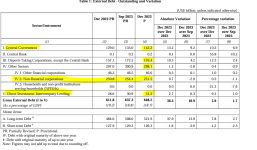There are two parts to your question. One is the Indian context. I won't be answering that because I have not kept myself informed on that.What's the worry if debt is in Indian currency?? Rather than printing and hence contributing to inflation they are borrowing in I Indian currency ..External debt is serious issue which is coming below as percentage of GDP ..
The other is if large increase in internal debt is not that bad. Banks and Financial Institutions have a finite amount of money to lend. If the Government takes a large chunk of it, there is that much less for the private sector and consumers. So it can have an effect on growth. Also it decreases your credit rating and that will increase your cost of borrowing. And it also creates inflation and brings down the value of your currency. Making loans even costlier.





